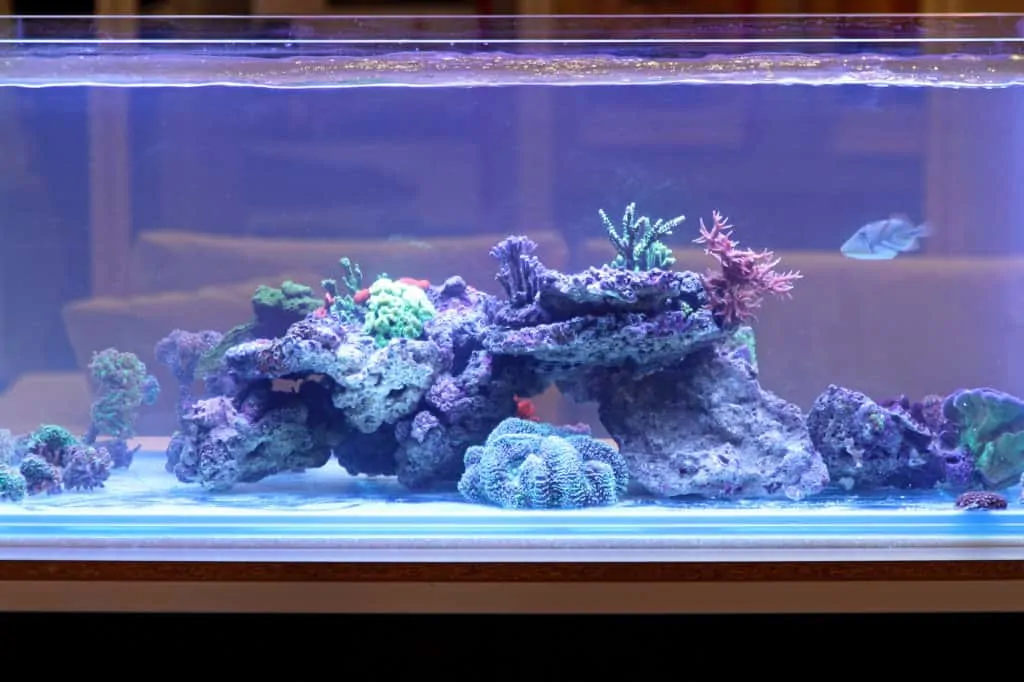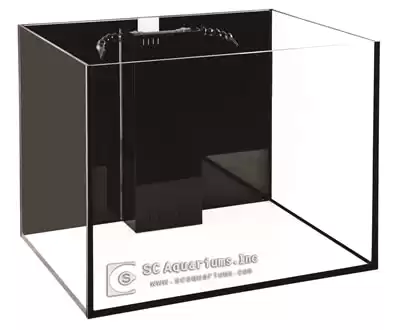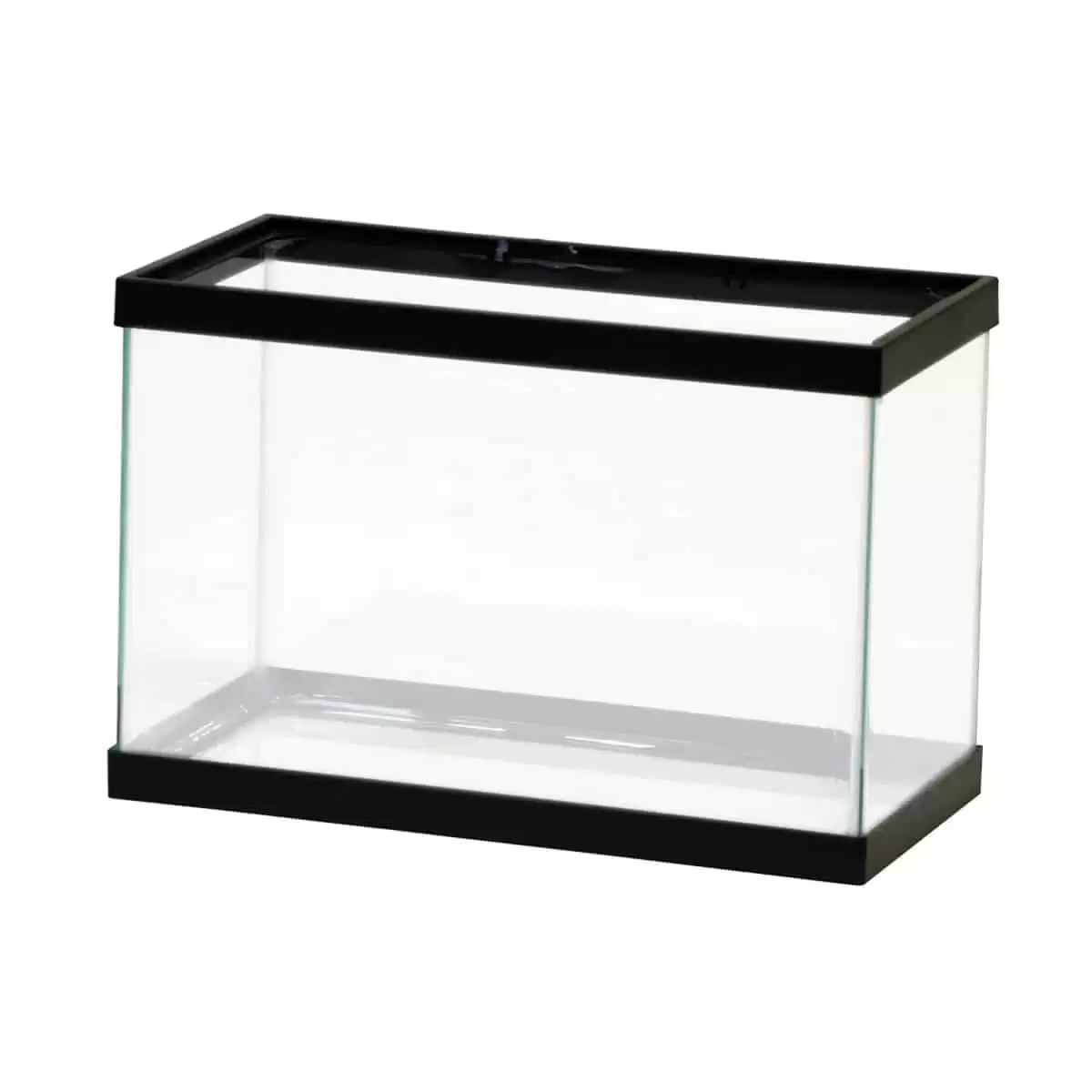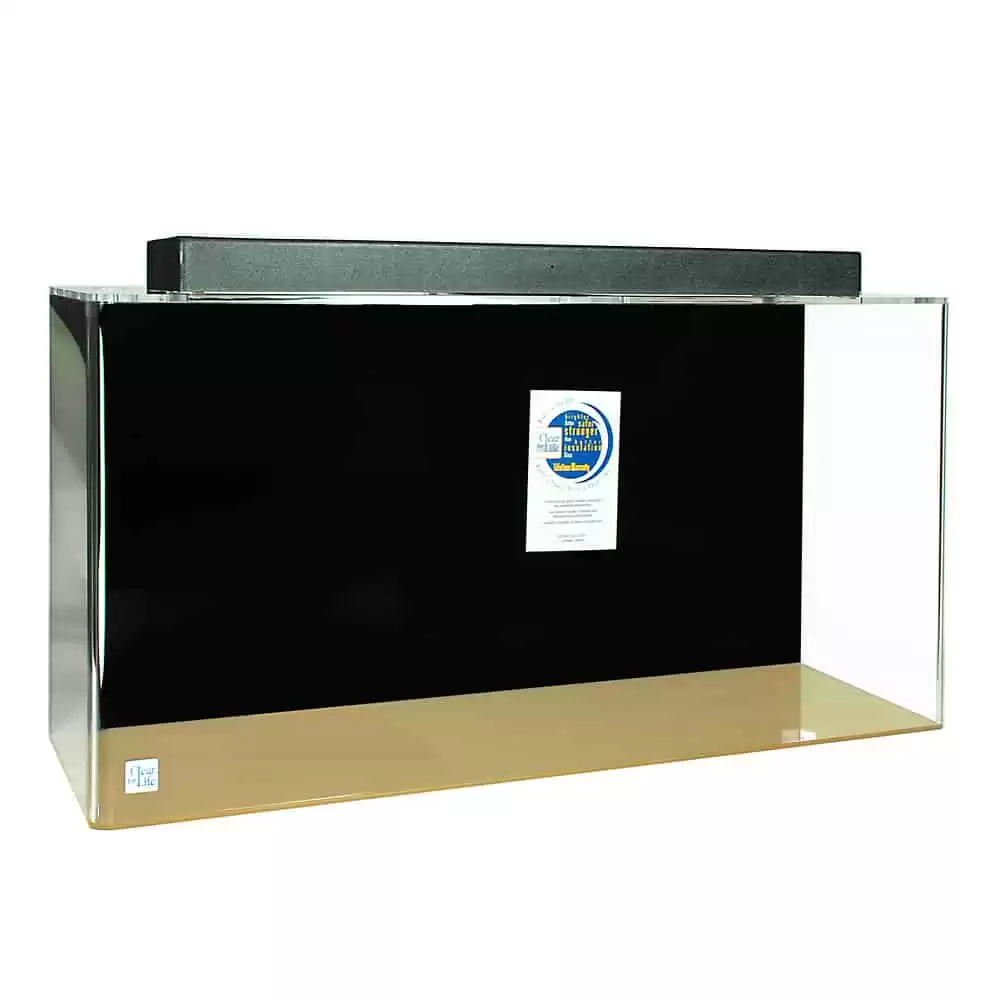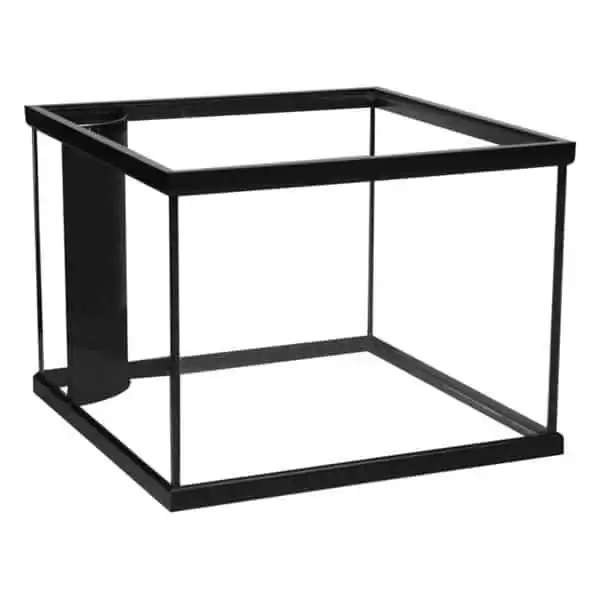When you’re prepping your home for a tank setup, one of the first things you’re going to consider is what fish tank size you want. Larger tanks are great for people who want to home a variety of aquarium fish, but they also take up a lot of space and fall into a higher price bracket. Smaller tanks, on the other hand, can severely limit how much livestock you can keep. If you have the space, though, but still want something easy to maintain, a 90-gallon tank might be the ideal choice for many aquarium owners.
Size isn’t the only thing to consider in a tank setup, though. There are other factors, such as opting for acrylic or glass — and whether that glass is tempered or non-tempered — or whether or not you want a rim.
With larger tanks, you also need to consider how to most practically cater to your aquarium’s needs — whether freshwater or saltwater — while making sure you don’t have to panic every couple of hours that it’s going to flood.
Continue on with our guide below to help you pick out the perfect 90-gallon aquarium.
|
4.5
|
4.0
|
3.7
|
Acrylic vs. Glass
Aquariums can either be made from acrylic or glass. There are a few main differences between the two to consider:
Pros of acrylic aquariums: lightweight, harder to break, able to be manufactured in different shapes, smooth corners, less distorted and clearer viewing, easier to drill
Cons of acrylic aquariums: easily scratched, needs full stand support along the bottom, tends to yellow with age, more expensive, and harder to find than glass
Pros of glass aquariums: not scratched as easily, less expensive, and easier to find than acrylic
Cons of glass aquariums: easier to break, heavy, only come as rectangular or square, stays clear and does not yellow, harder to drill, more distorted viewing
While it may seem like the clear choice is acrylic, no pun intended, most aquarium owners prefer glass. Generally, owners only opt for acrylic in custom jobs and 125-gallon tanks or larger. Because of its flexibility and durability, you can get a beautiful design with an acrylic tank, but the current price of acrylic also makes this an expensive endeavor.
For most hobbyists, glass aquariums service their needs and can be perfectly modified to fit what they want. Aquarium plants, LED lighting, and plenty of fish with nice colors can make a glass aquarium pop just as much!
Tempered vs. Non-Tempered Glass
Tempered glass is strengthened and shatters into chunks instead of splintering when hit. While this sounds ideal for larger tanks, given the water pressure inside, tempered glass would actually explode outward if substantially damaged. Non-tempered glass, on the other hand, only cracks when hit with enough force, and it generally only leads to a (hopefully small and steady) leak rather than completely shattering.
It is important to know whether your aquarium glass is tempered or not if you plan on drilling to make holes for filtration. Because of its strength, tempered glass is nearly impossible to drill with regular equipment and would need to be taken into a specialty shop.
Generally, tanks have a tempered glass bottom, with the other panels being non-tempered. Occasionally, there is a sticker on the bottom that tells you whether the glass is tempered. If you have any doubt, though, it could be worthwhile to visit a glass shop to have it examined under magnification before attempting to drill.
Rimmed vs. Rimless
If you’re considering your aquarium’s aesthetic, you’ll want to think about whether you want a rimmed or rimless design. Over the past few years, the rimless design has gained popularity for its clean and polished look, but keep in mind that you’ll likely need to order a specialized mesh cover instead of a traditional aquarium hood to prevent fish from jumping out.
Some hobbyists have also noted that rimless aquariums are harder to keep free of smudges and experience more salt creep in saltwater aquariums. Water also evaporates more rapidly under a mesh top, which will alter the salinity and/or require more frequent top-offs. Especially with larger fish tanks, this means changing out several gallons of water at a time.
That being said, rimless aquariums tend to look more professional while rimmed aquariums can look a little like a classroom experiment. Overall, though, this is a preference that won’t actually affect the tank’s success.
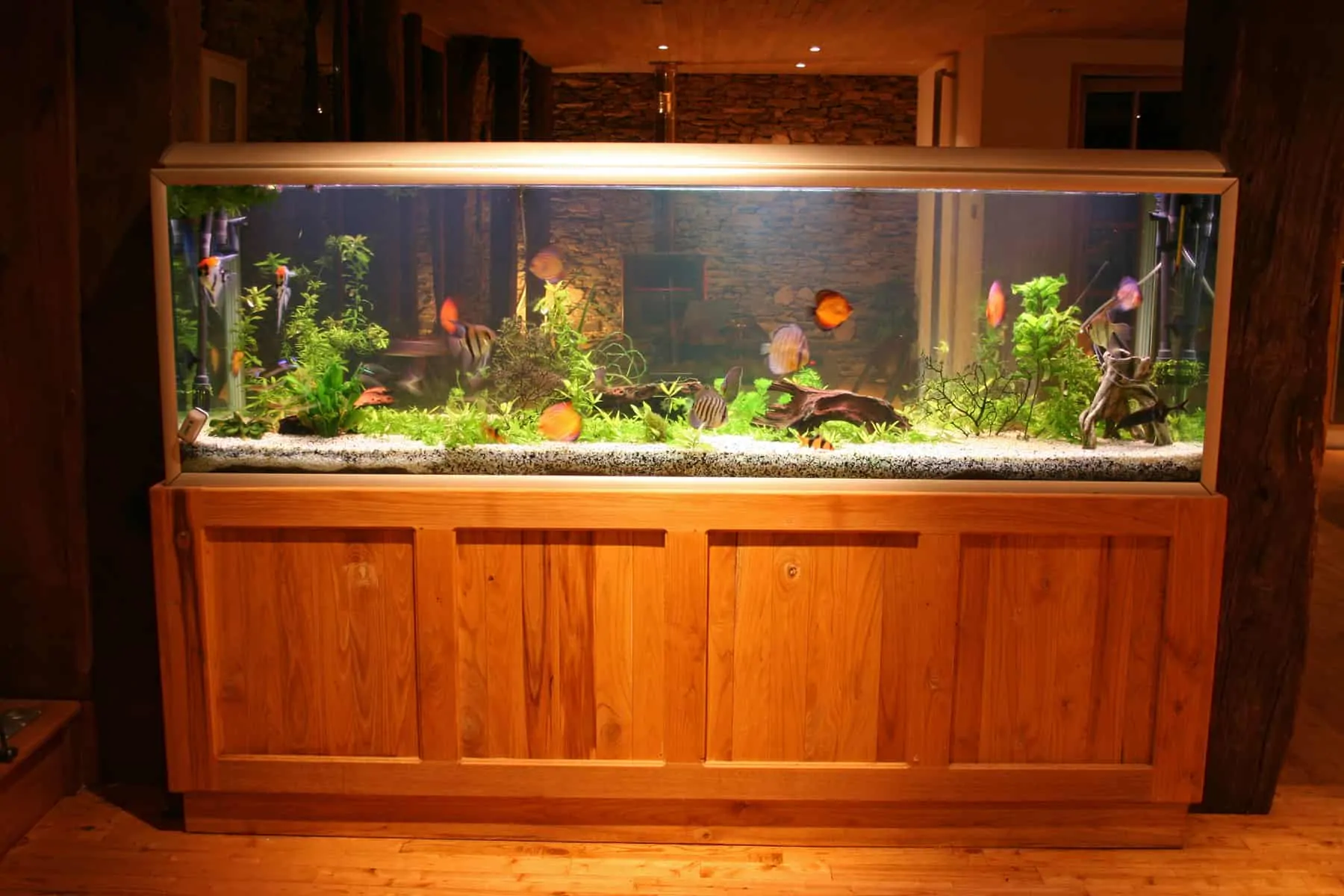
Freshwater vs. Saltwater
Many hobbyists incorrectly assume saltwater aquariums require a different initial setup than freshwater fish tanks. This simply is not true — saltwater can be just as easy as freshwater, depending on what you plan on keeping.
Partly, this might stem from the way advanced hobbyists construct their saltwater setups. They fill them with exotic, colorful fish, tons of aquarium decor, and post photos every couple of months lit with fancy aquarium lights showing off how impressive their tanks are, but the truth is that you can get far cheaper aquariums and still use saltwater if you want to keep saltwater fish.
Testing for Leaks
Once you’ve decided on the size, shape, and type of tank you want, the most important aquarium advice is to test it for leaks. Even with the best-looking silicone and sealed drillings, there is always the possibility of an open seam somewhere, and water will always find a way through if there is one!
We understand being eager to get the aquarium up and running, but if you don’t test for leaks first, you might not be able to set it up at all. Overnight, your 90-gallon tank could become a 20-gallon tank! It’s better to learn that lesson before you fill it with fish and aquarium plants, so it’s best practice to fill a new tank to the top with tap water and leave it for a few days — the longer the better.
A few times per hour, wipe the tank down with a paper towel, looking for any signs of moisture. If you find a wet area, contact the seller. They’ll most likely try to correct the situation. You could also buy aquarium-safe silicone to reinforce open areas after you empty the tank if you’d like to try and fix it yourself.
Once the silicone has cured, test for leaks again. After a week, empty the tank and start with the official set up of your aquarium.
Our Top Four 90-gallon Aquariums
We picked these 90-gallon aquarium options based on their practicality, ability to be customized, and customer reviews. Any one could be used for saltwater or freshwater, but they each have their own unique features.
90-Gallon Starfire Cube Tank with Center Overflow
- Built-in Overflow Box with 3 holes drilled (all 3 holes fit SCH40 1" Bulkhead)
- SCH40 standard Size Plumbing Kit included
Of these larger fish tanks, the 90-Gallon Starfire Cube Tank is one of the more sleek and compact rimless options. It features a center overflow for a customized sump or canister filtration. It measures 36″ L x 24″ W x 24″ H with 12 mm Starfire glass for ultra-clear viewing. The centered return nozzles allow for an equal distribution of flow to each side, helping the aquarium filters in preventing dead zones and algae growth.
This deep tank is wider than the other tanks featured on this list, allowing for deeper rockwork that can be staggered to create more shelving for coral growth and caves for shy and baby fish in a saltwater system. The stand and cover are not included, so you need to find your own way to keep the tank planted firmly in place.
Compared with similar products, customer reviews rated this aquarium as being in a slightly more expensive price bracket, but worth the money if you have a specific setup and clean aesthetic in mind. Reviewers also commented on good silicone coverage and quality customer service if problems do arise.
What we like:
- Highly customizable for filtration
- Starfire glass for better viewing clarity
- Rimless and cube-shaped
- Pre-drilled
Room for improvement:
- Does not include equipment for filter of choice or plumbing
- No option between a black and clear back panel
Marineland 90 Corner-Flo™ Rectangular Aquarium
- Scratch-resistant, distortion-free glass
- Front section of the Corner-Flo™ is removable for easy cleaning
- Top and bottom plastic frames – silicone-sealed top frame to prevent capillary action
Marineland is one of the most well-known aquarium brands and offers the 90-gallon Corner-Flo™ Rectangular Aquarium (Black). This rimmed tank measures 48″ L x 18″ W x 24″ H and has one overflow box in the far left corner. The glass is 10 mm on the sides and 6 mm on the bottom, already pre-drilled for easy connection to a sump or aquarium canister filter.
The tank also comes with a plumbing kit, including bulkhead fittings, drain and return pipes, and dual Loc-Line® outlet nozzles. Again, the stand and cover are not included.
Customer reviews comment on these tanks occasionally having poor silicone coverage known to cause extensive leaks. Otherwise, tank quality is slightly above average, pricing is fair, and customer service is receptive.
What we like:
- Pre-drilled
- Some plumbing included
- Standard aquarium size to make aquarium decor and accessory fitting easy
Room for improvement:
- Overflow panel cannot be moved
- Only one direction of provided flow
- Potential silicone coverage issues
Aqueon 90-Gallon Standard Glass Aquarium
- High quality glass construction
- For freshwater and marine applications
- Clean silicone edges
- Always include a drip loop when plugging aquarium appliances into the electrical outlet
The Aqueon 90 Gallon Standard Glass Aquarium is as standard as it gets. This 48.5″ L x 18.5″ W x 25.375″ H tank features a black rim and can come with either black or clear silicone. Depending on material availability, the tank may sometimes be tempered glass. A stand and cover are not included.
Aqueon tanks are a customer favorite for quality, versatility, and customization. This can be a saltwater or freshwater fish tank. Its versatility even makes it an ideal choice for amphibians and reptiles. Plus, it can be drilled for a sump, aquarium canister filter, or kept as-is for a hang on the back (HOB) filter. Aqueon also holds a dollar per gallon sale once or twice a year that makes these tanks a steal!
Usually, they keep this under a certain amount, but they regularly conduct this sale for 20-gallon tanks, 40-gallon tanks, 75-gallon fish tanks, and 90-gallon tanks.
What we like:
- Standard size for easy equipment compatibility
- Highly customizable
- Can be very inexpensive without compromising quality
Room for improvement:
- Unpredictable as to whether the glass is tempered or non-tempered
Clear-For-Life 90 Gallon Rectangle Aquarium
- Acrylic aquariums are brighter, safer, and stronger than glass.
- Not only will your fish look better, they'll be safer; acrylic won't shatter like glass and is a much better insulator to protect your fish from temperature fluctuations.
If you’re looking for acrylic, the Clear-For-Life 90 Gallon Rectangle Aquarium may be an option worth considering. These fish tanks measure 48″ L x 18″ W x 24″ H and have rounded edges with a pre-cut cover for equipment and access to the inside. The background can also come in several beautiful colors including black, sapphire blue, and clear. Stand, accessories, and aquarium lights are not included.
Overall, customer approval is fair and the clarity acrylic gives is appreciated. For their inexpensive price, these fish tanks have a clean appearance, are lightweight, and come with their own cover so no fish can escape.
What we like:
- Rounded edges
- Clear and lightweight acrylic
- Built-in cover
Room for improvement:
- Limited access and equipment compatibility due to pre-cut lid
- Hard to clean the lid
FAQ
Here are some commonly asked questions that you should consider before buying your tank!
How big is a 90-gallon fish tank?
The standard rectangular 90-gallon fish tank is 48″ L x 18″ W x 24″ H.
How much does a 90-gallon fish tank cost?
When all is said and done, starting a 90-gallon tank will cost close to $2,000, including the tank, aquarium stand, lighting, filtration, substrate, decoration, and other accessories; and this is just the bare minimum! That is why many enthusiasts usually wait for the dollar per tank gallon sale when prices are greatly reduced instead of spending the usual $1,000 for just the tank.
Lighting alone for this size tank can cost close to the price of the tank depending on if you want to grow plants or corals. A system will cost as much as you’re willing to put into it, but can also end up costing more later on if things go wrong and if you chose cheap expense over quality in the beginning.
Almost always, it is better to go for the more expensive heater, light, powerhead, etc. You don’t want to have to upgrade in a year’s time because you want to try more advanced corals or plants and the equipment has already broken and/or cannot keep up with your system.
How many fish can you have in a 90-gallon tank?
This completely depends on the type of system you end up running. Some common choices are a freshwater community, cichlid tank, goldfish, predatory freshwater, saltwater community (‘fish only with live rock’/FOWLR), saltwater community tank reef setup, or predatory saltwater FOWLR.
If going for the typical freshwater community tank, the general rule is one inch of fish per gallon, though it is always best to use your judgment for the bio-load that your aquarium can handle.
If going for the typical saltwater community tank, the general rule is one inch of fish per every 5 gallons of water. However, every type of saltwater fish has its own personality and one may need more space than the next. Especially for saltwater, it is important to stock according to your own tank instead of following a general rule.
If you’re setting up a tank with larger fish, either freshwater or saltwater, a 90-gallon tank fills up quickly. Depending on the species stocked, you will most likely end up with less than 10 fish in your aquarium.
How much does a 90-gallon fish tank weigh?
A lot!
Every gallon of water weighs about 8 pounds. Multiply that by 90 and you get 720 pounds in just water weight–keep in mind that your 90-gallon tank won’t actually hold 90 gallons of water due to displacement by substrate, rocks, and other objects.
The empty glass tank will be 100-200 pounds with the stand and canopy (optional) adding another 50-100 pounds. In general, 1-2 pounds of the substrate is recommended for every gallon of water for both freshwater and saltwater. For saltwater, another 1-2 pounds of live rock per gallon is also suggested.
Along with filtration, your 90-gallon aquarium will end up well over 1,000 pounds, possibly even closer to 1,500 pounds. Definitely make sure that your floorboards can withstand this pressure before filling up your tank!
How long do I have to wait for my Tank to cycle in a 90-gallon aquarium?
Before you can put fish in your new 90-gallon tank, you must ensure that it’s fully cycled.
The Nitrogen Cycle
The Nitrogen Cycle is the term that refers to the chemical process that every aquarium must go through to render the water safe for your fish.
In the aquarium, organic waste, such as uneaten food, decaying plants, and fish waste, break down to form ammonia. Ammonia is highly toxic to your fish. However, your tank surfaces and filtration system also contain certain beneficial bacteria called Nitrosomonas that process the ammonia, transforming it into nitrite.
Nitrite is also dangerous to fish, but more species of bacteria called Nitrobacter “eat” the nitrite, converting it into nitrates. Nitrates are much less harmful to fish, but you must still carry out weekly water changes to maintain your filtration system correctly to keep nitrate levels below 20ppm.
How to start the Nitrogen Cycle
You can cycle the tank with or without fish.
Cycling with fish
As soon as you put fish into your new tank, they begin producing waste and ammonia, and uneaten fish food adds to the mix or organic waste. Now, at that stage, the aquarium environment doesn’t contain any established colonies of Nitrosomonas bacteria to consume the ammonia. So, toxin levels rapidly rise, causing an ammonia spike.
As the ammonia levels become dangerously high, the water turns cloudy. As soon as the bacteria proliferate to levels where they can clear the ammonia, the water clears, and the ammonia level falls.
However, nitrite is then produced. In response, the numbers of Nitrobacter bacteria increase rapidly because of the quantity of nutrients available to them. Consequently, the nitrite levels begin to drop.
Nitrate
Nitrate is the final product in the Nitrogen Cycle.
Although low levels of nitrate in the water are not as harmful to your fish and other livestock as ammonia or nitrites, too much nitrate can encourage algae blooms.
As mentioned earlier, you need to perform partial water changes each week to remove excess nitrates. Also, including lots of live plants in your setup is a very effective way to keep nitrates down, as plants use the chemical as a fertilizer. In fact, you can use dirty fish tank water to boost the growth of your house and garden plants, too!
How Long Does Cycling Take?
The main drawback to cycling your tank with fish is that these starter fish often perish due to the ammonia and nitrite spikes that will occur. That’s why these unfortunate fish are often referred to as “suicide fish.”
Cycling using this method can take from 30 to 45 days. Throughout that period, be sure to test the aquarium water every couple of days to monitor the levels of ammonia, nitrites, and nitrates. Ideally, the levels of nitrates should be 20ppm or less, but ammonia and nitrites must be zero.
As soon as those levels are acceptable, you know that the biological filter system can cope with the additional bio-load, and you can go ahead and add more fish to your tank.
What is fishless cycling?
Perhaps a more humane way of cycling your new 90-gallon tank is to use the fishless method.
Begin by setting up your fish tank with everything you need except fish. So, you’ll need:
- Filtration system
- Heater
- Lighting unit
- Plants
Fill the tank with dechlorinated tap water, set the heater to around 82° F, start the filter system, and sprinkle some fish flakes into the tank. The fish food will gradually begin to decompose, releasing ammonia into the water and kicking off the cycling process.
You can accelerate the cycle by putting a handful of substrate, some filter media, plants, or ornaments from a mature aquarium. All those items carry existing colonies of Nitrosomonas and Nitrobacter bacteria that will happily begin to consume the ammonia that’s produced by the rotting fish food. As a result, the number of bacteria in the tank increases rapidly, speeding up the cycling process.
However, be very careful that you don’t introduce parasites and diseases into your new setup. Often, unwanted creatures such as snails and worms can hitchhike into an aquarium on old substrate, plants, and fish. So, make sure that the mature tank you’re harvesting from is clean and healthy.
Using pure ammonia for fishless cycling
So, now you know that your aquarium water must contain ammonia for the Nitrogen Cycle to begin, and that applies to both fish-in and fishless cycling.
If you take the fishless cycling route, you can speed up the process by adding five drops of pure ammonia per ten gallons of water each day. Keep testing the water every day, using an aquarium water testing kit. The levels of ammonia will quickly rise.
Once nitrites are measurable in the water, you can reduce the ammonia to just three drops every day. Carry on adding ammonia to the water until the levels of ammonia and nitrites are zero. At that point, you know that your 90-gallon tank is cycled, and you can add a few fish.
Make sure that you only use pure ammonia that doesn’t contain perfumes or other additives.
The downsides to fishless cycling
There are a few downsides to fishless cycling.
First of all, you’ll need to wait for the fish food to decompose before it begins to produce ammonia. The amount of ammonia produced might not create enough bacteria to handle the waste that the fish produce when you add them. So, you might still encounter ammonia spikes.
However, those spikes are generally less intense and are briefer than those that happen with the fish-in cycling method. So, your fish are more likely to survive and most likely won’t suffer any ill effects.
Also, if you can add a few items from a mature tank and some pure ammonia, you’ll speed up the process considerably.
Our Thoughts
I currently run an Aqueon saltwater glass tank and I have been extremely happy with it for over a year, though I have not tried drilling it and I have not made any further modifications.
It is important to really think about the future of your new tank and get a good foundation that you can always build upon. Try asking yourself these questions first before going out to buy your tank:
- Will this tank be for saltwater or freshwater?
- Will you want to drill for plumbing?
- How much weight can your floor hold?
- Do you want your tank to be rimmed or rimless?
- What kind of aquarium stand do you have/are you getting?
Regardless of what type of 90-gallon tank you go for, always do ample research on livestock and try to get the best equipment that you can to avoid having to upgrade later!
Congratulations on your new tank!
If you have any questions about 90-gallon tank options, or if you currently have a 90-gallon system running, don’t hesitate to leave a comment below!

